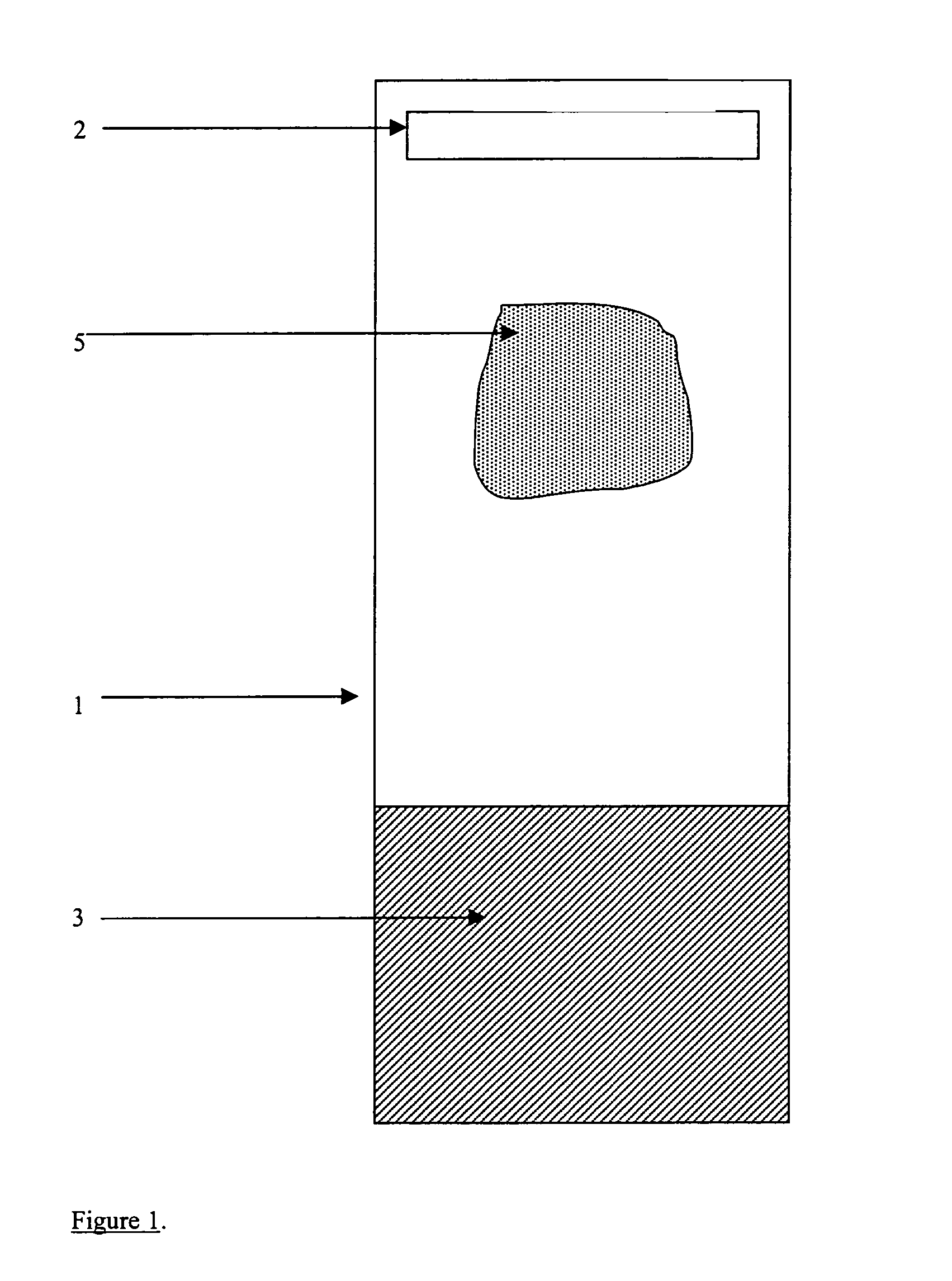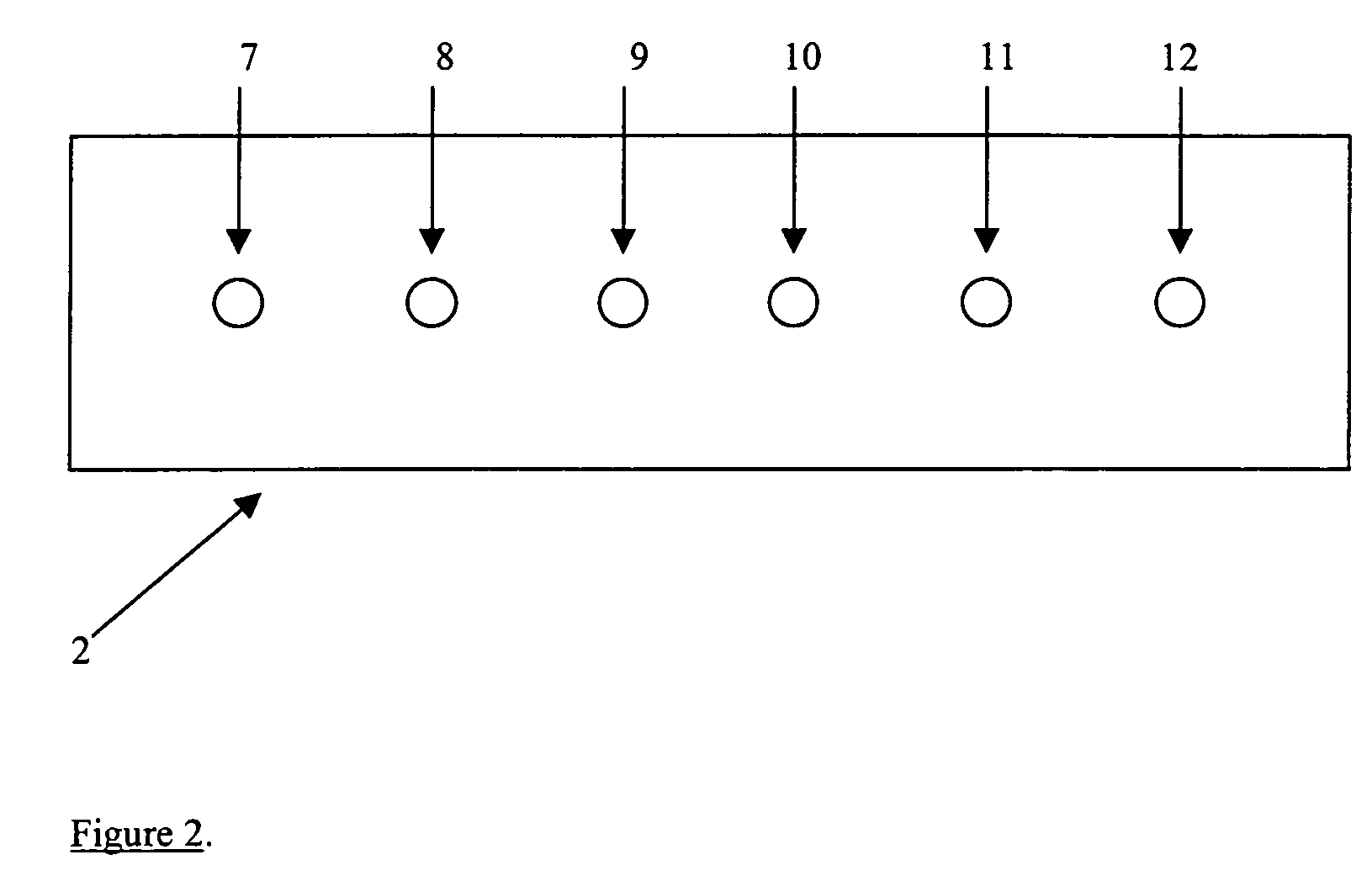Quality control for cytochemical assays
a cytochemical and assay technology, applied in the field of quality control of cytochemical assays, can solve the problems of insufficient type of information available from such stains for accurate diagnosis, lack of inter-laboratory standardization, and inability to develop simple methods for accurately and reliably monitoring quality control
- Summary
- Abstract
- Description
- Claims
- Application Information
AI Technical Summary
Benefits of technology
Problems solved by technology
Method used
Image
Examples
example 1
Select Phage That Mimic Target Epitopes from Monoclonal Antibodies Commonly Used in Clinical Immunohistochemical Laboratories
[0088]For the device and methods describe herein, it is desirable to identify peptides that will mimic the antigen-specific interaction of antibody with the native antigen. These peptides will be suitable for use on either the quality control adhesive strips or glass slides described herein. Suitable peptide sequences identified as described herein are more amenable to consistent manufacture than the native protein itself. The monoclonal antibody clones suitable for use as described herein are those that recognize the antigen even after the tissue has been fixed with formalin and embedded in paraffin wax. These monoclonal antibody clones represent some of the most commonly used primary antibodies in the clinical IHC laboratory. The cyclic peptide libraries comprise a random assortment of peptides that have two cysteine residues that are linked by a disulfide. ...
example 2
Peptide (Antigen Mimic)—Matrix Optimization
[0102](a) Overview
[0103]Once an appropriate peptide sequence is identified, the next step is to determine the linear range of the peptide concentration on the control strips. In other words, how much peptide should be placed onto the nylon strip so as to be most sensitive to early reagent failure!
[0104]Carboxy-derivatized nylon or PVDF matrices allow high capacity covalent immobilization of proteins to the surface of the matrix while retaining biological activity. High capacity nitrocellulose membranes also serve to immobilize proteins or peptides in a manner adaptable to this invention. Processing steps include the covalent or non-covalent binding of protein to the membrane and a blocking step to quench the remaining covalent binding capacity, as described herein. Standardization is more readily achieved with proteins that are covalently, rather than non-covalently, adsorbed to matrices. Other desirable characteristics of nylon or PVDF mem...
example 3
Validation of Synthetic Control Strips
[0111]Each peptide mimic or antigen comprises a somewhat unique and independent product. Therefore, each needs to be independently validated. This section describes the process of validating the synthetic control strips to verify that (a) each synthetic control strip has a high signal to noise ratio, (b) the synthetic control strip is antibody-specific, and (c) each synthetic control strip is capable of detecting early reagent failure.
[0112](a) Measurement of signal to noise ratio
[0113]The synthetic control strip contains two distinct area: (1) the reagent surface that is devoid of bound peptide, and (2) the test area with specific peptide. The test strip containing no peptide should be used as a test for non-specific binding of antibody to the membrane itself. Excessive background to the negative control (surface without peptide) indicates the need to investigate the blocking procedure, buffer composition, and / or the washing procedure during th...
PUM
| Property | Measurement | Unit |
|---|---|---|
| Concentration | aaaaa | aaaaa |
| Transparency | aaaaa | aaaaa |
Abstract
Description
Claims
Application Information
 Login to View More
Login to View More - R&D
- Intellectual Property
- Life Sciences
- Materials
- Tech Scout
- Unparalleled Data Quality
- Higher Quality Content
- 60% Fewer Hallucinations
Browse by: Latest US Patents, China's latest patents, Technical Efficacy Thesaurus, Application Domain, Technology Topic, Popular Technical Reports.
© 2025 PatSnap. All rights reserved.Legal|Privacy policy|Modern Slavery Act Transparency Statement|Sitemap|About US| Contact US: help@patsnap.com



